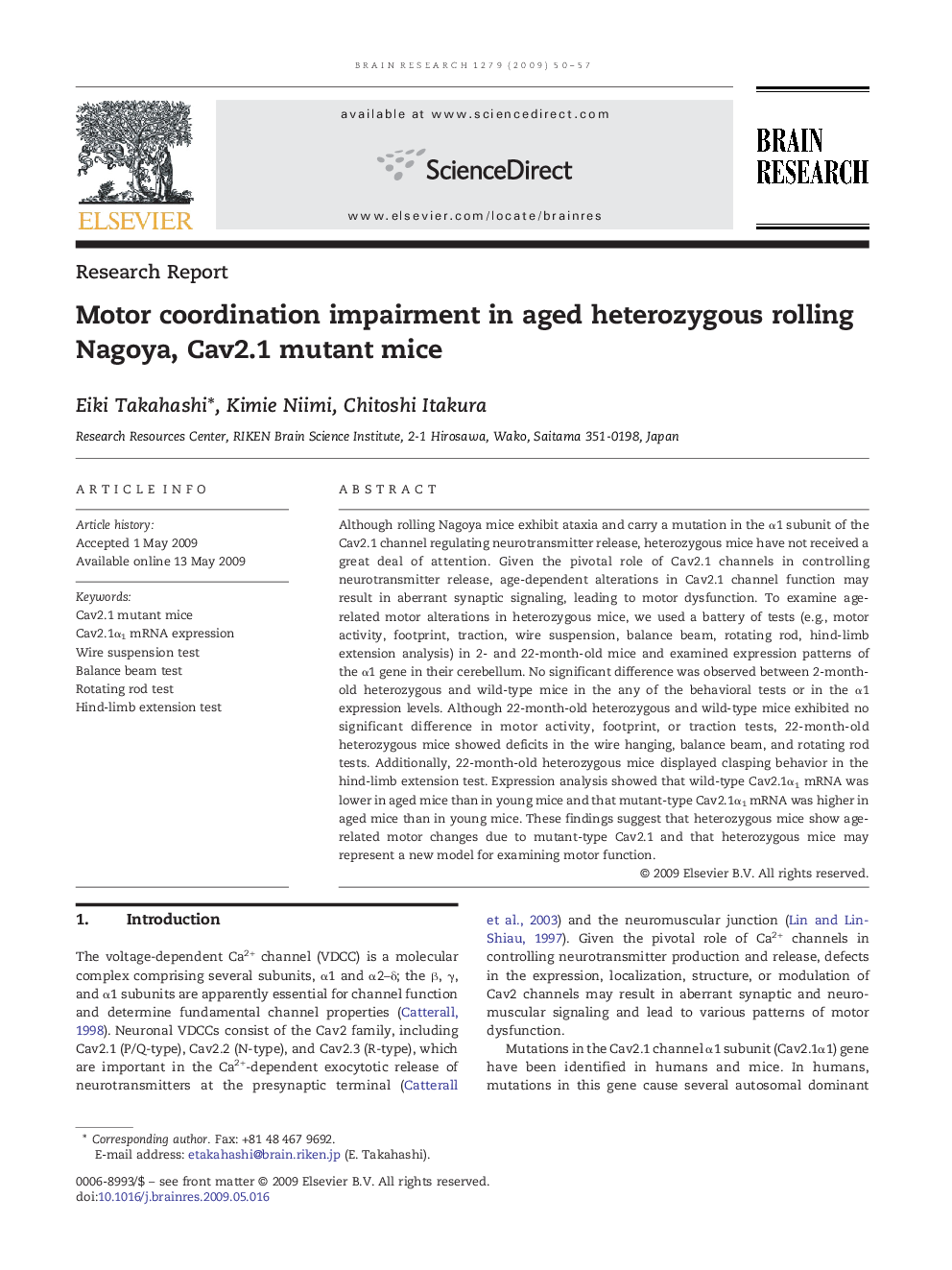| کد مقاله | کد نشریه | سال انتشار | مقاله انگلیسی | نسخه تمام متن |
|---|---|---|---|---|
| 6265614 | 1614160 | 2009 | 8 صفحه PDF | دانلود رایگان |

Although rolling Nagoya mice exhibit ataxia and carry a mutation in the α1 subunit of the Cav2.1 channel regulating neurotransmitter release, heterozygous mice have not received a great deal of attention. Given the pivotal role of Cav2.1 channels in controlling neurotransmitter release, age-dependent alterations in Cav2.1 channel function may result in aberrant synaptic signaling, leading to motor dysfunction. To examine age-related motor alterations in heterozygous mice, we used a battery of tests (e.g., motor activity, footprint, traction, wire suspension, balance beam, rotating rod, hind-limb extension analysis) in 2- and 22-month-old mice and examined expression patterns of the α1 gene in their cerebellum. No significant difference was observed between 2-month-old heterozygous and wild-type mice in the any of the behavioral tests or in the α1 expression levels. Although 22-month-old heterozygous and wild-type mice exhibited no significant difference in motor activity, footprint, or traction tests, 22-month-old heterozygous mice showed deficits in the wire hanging, balance beam, and rotating rod tests. Additionally, 22-month-old heterozygous mice displayed clasping behavior in the hind-limb extension test. Expression analysis showed that wild-type Cav2.1α1 mRNA was lower in aged mice than in young mice and that mutant-type Cav2.1α1 mRNA was higher in aged mice than in young mice. These findings suggest that heterozygous mice show age-related motor changes due to mutant-type Cav2.1 and that heterozygous mice may represent a new model for examining motor function.
Journal: Brain Research - Volume 1279, 7 July 2009, Pages 50-57